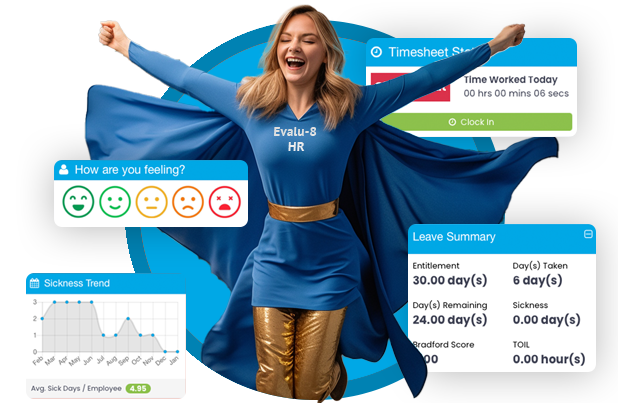In the modern world of work, the concept of ‘staggered hours’ has become increasingly prevalent. This term refers to a specific type of working pattern that allows for flexibility in the start and end times of an employee’s workday. This article will delve into the intricacies of staggered hours, providing a comprehensive understanding of this working pattern.
Staggered hours are part of a broader shift towards more flexible working arrangements, driven by changes in technology, employee preferences, and organisational needs. This article will explore these factors in detail, providing a comprehensive understanding of the context in which staggered hours have emerged.
Definition of Staggered Hours
The term ‘staggered hours’ refers to a working pattern in which employees do not all start and end their workday at the same time. Instead, start and end times are staggered, allowing for a more flexible approach to the working day. This can be beneficial for both employees and employers, as it can help to balance work and personal commitments, reduce commuting times, and improve productivity.
Staggered hours can take many forms, depending on the specific needs and preferences of the employees and the organisation. For example, some employees may start early and finish early, while others may start late and finish late. Alternatively, employees may have the flexibility to choose their start and end times within certain limits set by the employer.
Benefits of Staggered Hours
Staggered hours can offer a range of benefits for both employees and employers. For employees, the flexibility of staggered hours can help to balance work and personal commitments, reduce commuting times, and improve work-life balance. This can lead to increased job satisfaction, reduced stress, and improved mental health.
For employers, staggered hours can help to extend the operating hours of the organisation, improve productivity, and reduce congestion in the workplace. This can lead to increased operational efficiency, improved customer service, and reduced costs. Furthermore, offering staggered hours can help to attract and retain talented employees, as it demonstrates a commitment to flexible working and employee wellbeing.
Challenges of Staggered Hours
Despite the potential benefits, implementing staggered hours can also present a number of challenges. For employees, the flexibility of staggered hours can sometimes lead to longer working hours, increased work intensity, and difficulties in coordinating work with colleagues. This can lead to increased stress, reduced work-life balance, and potential burnout.
For employers, managing staggered hours can be complex and time-consuming. It requires effective communication, coordination, and management to ensure that all employees are working effectively and that operational needs are met. Furthermore, there may be legal and regulatory considerations to take into account, such as ensuring compliance with working time regulations and health and safety requirements.
Context of Staggered Hours
Staggered hours have emerged as part of a broader shift towards more flexible working arrangements. This shift has been driven by a number of factors, including changes in technology, employee preferences, and organisational needs.
Advances in technology have made it easier for employees to work flexibly, with many tasks now able to be performed remotely or outside of traditional working hours. This has opened up new possibilities for staggered hours, with employees able to start and end their workday at times that suit them.
Employee Preferences
Employee preferences have also played a key role in the rise of staggered hours. Many employees value the flexibility that staggered hours provide, as it allows them to balance work and personal commitments, reduce commuting times, and improve work-life balance. This is particularly important for employees with caring responsibilities, long commutes, or other commitments that make traditional working hours difficult.
Furthermore, research has shown that employees who have control over their working hours are more likely to be satisfied with their job, more committed to their employer, and less likely to experience work-related stress. This suggests that staggered hours can have a positive impact on employee wellbeing and organisational performance.
Organisational Needs
Organisational needs have also contributed to the rise of staggered hours. For many organisations, having employees start and end their workday at different times can help to extend the operating hours of the organisation, improve productivity, and reduce congestion in the workplace. This can be particularly beneficial for organisations that operate in multiple time zones, serve customers outside of traditional working hours, or have limited physical space.
Furthermore, offering staggered hours can help organisations to attract and retain talented employees. In a competitive labour market, offering flexible working arrangements can be a key differentiator, demonstrating a commitment to employee wellbeing and modern working practices.
Implementing Staggered Hours
Implementing staggered hours requires careful planning and management. It involves balancing the needs and preferences of employees with the operational needs of the organisation. This section will explore some of the key considerations when implementing staggered hours.
Firstly, it is important to communicate clearly with employees about the purpose and benefits of staggered hours. This can help to gain buy-in and ensure that employees understand how staggered hours will work in practice. It may also be helpful to provide training or guidance to managers, to help them manage staggered hours effectively.
Setting Boundaries
When implementing staggered hours, it is important to set clear boundaries. This includes setting limits on the earliest and latest times that employees can start and end their workday, to ensure that operational needs are met and to comply with working time regulations. It may also include setting expectations about availability and responsiveness, to ensure that employees are not working excessively long hours or feeling pressured to be available at all times.
Furthermore, it is important to consider the needs of different groups of employees. For example, employees with caring responsibilities may need more flexibility in their start and end times, while employees who work in teams may need to coordinate their hours to ensure effective collaboration. This may require a degree of flexibility and adaptability in the implementation of staggered hours.
Monitoring and Evaluation
Once staggered hours have been implemented, it is important to monitor and evaluate their impact. This can involve collecting feedback from employees, monitoring productivity and performance, and assessing the impact on operational efficiency. This can help to identify any issues or challenges, and to make adjustments as necessary.
Furthermore, regular evaluation can help to demonstrate the benefits of staggered hours, both to employees and to the wider organisation. This can help to build support for staggered hours, and to ensure that they are sustainable in the long term.
Conclusion
In conclusion, staggered hours are a flexible working pattern that can offer a range of benefits for both employees and employers. However, they also present a number of challenges, and require careful planning and management to implement effectively.
As the world of work continues to evolve, it is likely that staggered hours will become increasingly prevalent. By understanding the intricacies of this working pattern, organisations can harness its benefits, overcome its challenges, and create a more flexible and responsive workforce.
See the quick demo now
Before we show you the quick demo, we need to make sure you are a real person.



